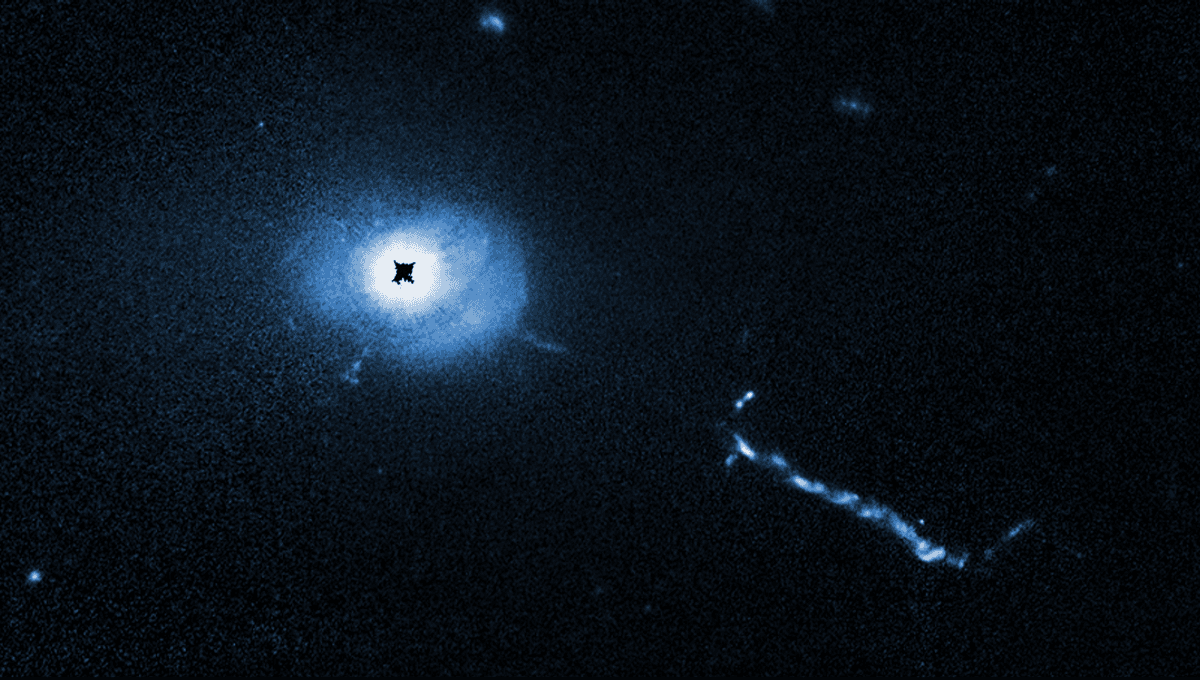
The supermassive black hole 3C 273 is a wonder. It is the first object identified as a quasar, a black hole that is eating stuff so voraciously the process outshines its own galaxy. It is so bright that even at 2.5 billion light-years away, it can be seen with a small telescope. To observe its details, however, scientists had to get clever with the Hubble telescope – and they found something weird.
This campaign of observations used a coronagraph, a system that creates little eclipses by blocking the light of stars. In this case, the coronagraph blocked the light of the supermassive black hole, which weighs a whopping 886 million times the mass of the Sun.
That approach finally revealed the anatomy of the jet of material leaving the surroundings of the supermassive black hole at almost the speed of light; within the 300,000-light-year-long jet, there are complex structures.
“We’ve got a few blobs of different sizes and a mysterious L-shaped filamentary structure. This is all within 16,000 light-years of the black hole,” Bin Ren, of the Côte d’Azur Observatory and Université Côte d’Azur in Nice, France, said in a statement. “Thanks to Hubble’s observing power, we’re opening a new gateway into understanding quasars. My colleagues are excited because they’ve never seen this much detail before.”
The new observations were combined with older images. In the results, the team not only saw peculiar structures but also discovered that the jet was moving faster the farther away from the quasar it got. It is possible that the peculiar L-shape is due to the presence of smaller galaxies that this quasar is feeding on.
“With the fine spatial structures and jet motion, Hubble bridged a gap between the small-scale radio interferometry and large-scale optical imaging observations, and thus we can take an observational step towards a more complete understanding of quasar host morphology,” Ren explained.
“Our previous view was very limited, but Hubble is allowing us to understand the complicated quasar morphology and galactic interactions in detail.”
The team hopes to follow up these observations with JWST, which could provide more details compared to Hubble thanks to its larger mirror, with different insights given that it looks at the universe in longer wavelengths.
3C 273 is an outstanding object. Back in 2017, estimates of its temperature were placed in the tens of trillions of degrees, challenging physical models of how we understand quasars and what they can do. This latest work is a step further in expanding that knowledge.
The study is published in the journal Astronomy & Astrophysics.
Source Link: “Weird Things” Around Enormous Black Hole Spotted By Hubble